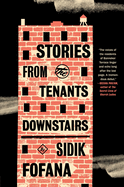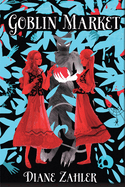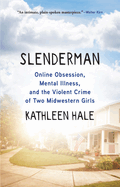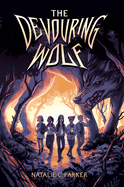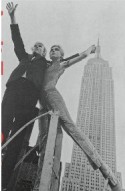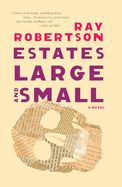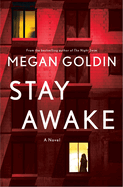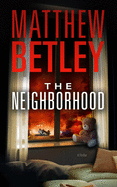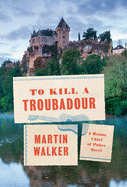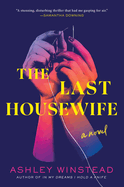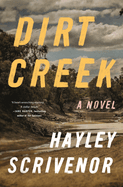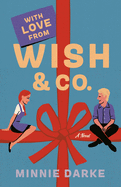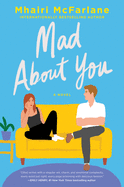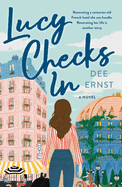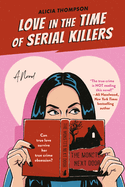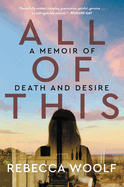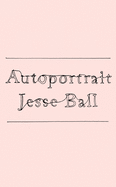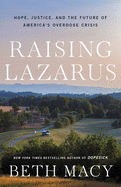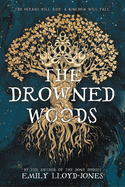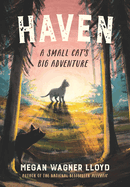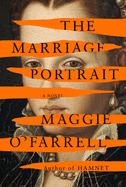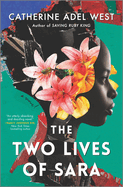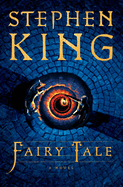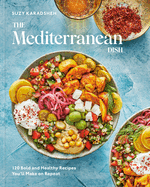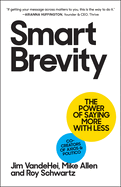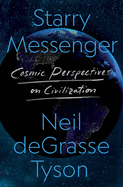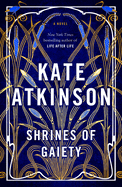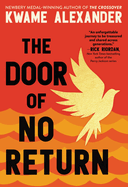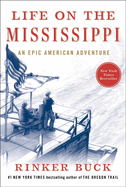Friday, August 19, 2022
Saturday is Bookstore Romance Day, and it's a perfect occasion to seek some great romance reading; in this issue we review Alicia Thompson's Love in the Time of Serial Killers; Minnie Darke's With Love from Wish & Co.; Lucy Checks In, a romance set in France; and British author Mhairi McFarlane's Mad About You.
But wait, there's more: starred reviews this week include Stories from the Tenants Downstairs by Sidik Fofana, featuring residents of a low-income apartment building in Harlem; Magnolia, the lush debut poetry collection from essayist Nina Mingya Powles; and Diane Zahler's Goblin Market, a delightfully imaginative story about the bond between two sisters.
In The Writer's Life, Naseem Jamnia, a Persian-Chicagoan former scientist, discusses The Bruising of Qilwa, which explores questions of identity and belonging in a nuanced medical mystery.
Stories from the Tenants Downstairs
by Sidik Fofana
Stories from the Tenants Downstairs, Sidik Fofana's electric debut, consists of eight stories featuring eight residents of a low-income apartment building in Harlem where rents are rising and eviction notices are multiplying. These men and women struggle at the edge of making ends meet and cope by various means, including hard work, stiff upper lips, bluffing, bluster and despair.
Mimi runs a hair salon out of apartment 14D, spends beyond her means and dreams of a house in the suburbs with her son's father, Swan. Swan (6B) lives eight floors below, with his mother, marveling at the country's first Black president and wishing he could find his own way out of the hustle. Swan's mother, Ms. Dallas (6B), wrestles with her day job as a paraprofessional at the local public school, bemoaning the students' behavior, scorning the young do-gooder teachers and awaiting the school's looming closure. Two students from Ms. Dallas's school each feature in stories of their own. Kandese (3A) suffers losses upon losses, while her boyfriend, perennial follower Najee (24M), dreams of stardom but finds tragedy. Mimi's erstwhile assistant, Dary (12H), flirts with a darker line of work. Neisha (21J), a former aspiring Olympic gymnast, has quit college and returned home to the building, where she has to face a trauma that still haunts her. Old Mr. Murray (2E) just wants to play sidewalk chess in peace, but the old ladies of the Banneker Terrace Committee of Concern want to make him their cause.
This quickly shifting narrative introduces vibrant, appealing characters in brief but three-dimensional sketches, and paints a larger picture of existential efforts and persistence. --Julia Kastner, librarian and blogger at pagesofjulia
Discover: This linked collection portrays the human condition by way of the struggle to make rent in a Harlem high-rise, with a cast of memorable characters.
Estates Large and Small
by Ray Robertson
The life of a middle-aged used bookseller in Toronto might not sound like promising fictional material, but in Estates Large and Small, Canadian novelist and critic Ray Robertson provides a warmhearted and unconventional love story that's also an opportunity for a gentle encounter with some of life's fundamental questions.
After a rent increase and the complications of commerce in the time of covid-19 force Phil Cooper to close his physical bookstore, he moves his inventory of 10,000 books online. When he's not anxiously checking his new website for orders, he's often visiting Toronto homes where survivors are anxious to dispose of a departed loved one's book collection. It's on one of these excursions that Phil meets Caroline, a well-educated, retired mail carrier who possesses a library she wants to sell after receiving a terminal cancer diagnosis. The chemistry between the pair, both of whom bear their share of scars from more than five decades of life as singles, is nearly instantaneous. Phil, an autodidact whose formal education ended with high school, invites Caroline to join him on a project he'd already begun as a solo quest--a survey of 2,500 years of Western philosophy.
Robertson (How to Die: A Book About Being Alive), who majored in philosophy at the University of Toronto, writes Phil with droll humor and world-weary cynicism, and Caroline with clear-eyed determination to live her final days on her own terms. Like the philosophers they encounter, Estates Large and Small only hints at answers to life's deepest mysteries, but it's a wise reminder that the journey is really the point. --Harvey Freedenberg, freelance reviewer
Discover: Warmhearted and droll, this novel stars a pair of middle-aged Canadian lovers who turn to the great philosophers and Jerry Garcia to help them confront life's existential questions.
Mystery & Thriller
Stay Awake
by Megan Goldin
In Stay Awake, a mind-bending murder mystery from Megan Goldin (The Escape Room), an exhausted woman tries to enter her apartment and is baffled to learn not only that it is occupied by other people but also that she hasn't lived there for two years.
It's 2:42 a.m. in New York City. Liv Reese has forgotten her keys and buzzes her roommate, Amy, to let her in. The people who answer the intercom have never heard of Amy or Liv. There is writing on Liv's body: her fingers tell her to "STAY AWAKE"; her forearms declare the words "DON'T TRUST ANYONE"; and above her right wrist is the name of a bar called Nocturnal. A search of her pockets reveals more than $1,000 in cash and a blood-soaked knife wrapped in a T-shirt. Liv quickly dumps the knife and hails a cab for Nocturnal. The bartender greets her warmly, although she has no recollection of ever being there. Liv is not suffering from a head injury, nor is she drunk or dreaming--but she is experiencing a very real nightmare. Before she can unravel what's going on in this taut, seemingly sci-fi mystery, she must evade someone who wants her dead and the police who want her for murder.
Masterfully told in two timelines, Goldin's novel is simultaneously intriguing and horrifying. Readers stay confused, right alongside the heroine, as to what has happened and what is happening. And while there are a few red herrings that don't quite work, the plot is undeniably bizarre and plausible. Stay Awake is a compelling read, all the way to the end. --Paul Dinh-McCrillis, freelance reviewer
Discover: Liv Reese doesn't know why she has a bloody knife or why police are in pursuit of her; she only knows she must stay awake to unravel this mind-bending murder mystery.
The Neighborhood
by Matthew Betley
At the start of The Neighborhood, an action-packed thriller by Matthew Betley (Amira), armed mercenaries enter a gated community in the dead of night to retrieve a package. They'll kill to complete their objective. Standing in their way is resident and ex-Special Forces operator Zack Chambers.
Zack thought he left his military background behind when he settled into family life in the secured community of Hidden Refuge. The houses are beautiful, the plots are large and the neighbors are close by--but not too close. A late-night knock on his door shatters his complacency. Local police outside claim that a nearby train carrying toxic chemicals has derailed and that the whole neighborhood needs to evacuate immediately. Zack senses something off about the cop on his doorstep but agrees to vacate. He then retreats to the woods to observe the unfolding events. His instincts are confirmed when a neighbor is shot in a confrontation. It's clear the "police" are fake, and Zack decides to do something about it. Initially a one-man army against an onslaught of bad guys, Zack is eventually helped by the sassy teenager next door and her boyfriend, trained in the martial arts. But Zack's makeshift group is outnumbered and outgunned, and he soon learns he shares a dark past with the lead insurgent. The stakes are life and death--for Zack and all his neighbors.
Nonstop fury and a hail of bullets propel Betley's novel. The author's military background should attract action buffs, but it's the teenager next door and her boyfriend, the novel's heroic sidekicks, that make this an enjoyable and popcorn-worthy read. --Paul Dinh-McCrillis, freelance reviewer
Discover: Standing in the way of deadly mercenaries who search a gated community for a package is an ex-marine in this explosively charged thriller.
To Kill a Troubadour
by Martin Walker
Former international journalist Martin Walker (The Coldest Case; The Crowded Grave) returns to France's Périgord district for To Kill a Troubadour, the 15th entry in the Bruno, Chief of Police detective series. Whether longtime fans or new to the series, readers will be immediately immersed in this absorbing story. Bruno Courrѐges, chief of police of the small town of St. Denis, has a summer schedule filled with tennis tournaments, walks with his basset hound and patrolling the community's charming streets. His routine is interrupted when a superior officer contacts him for his opinion regarding a sniper bullet found in a wrecked car. Bruno's instincts tell him there's more to the discovery than meets the eye.
He soon finds himself deeply involved in solving a mystery with significant diplomatic implications involving Spain and France. A song by his friends, the folk music group Les Troubadours, has gone viral and stirred a heated political controversy between the two countries. The group is scheduled to play an outdoor concert in St. Denis. Can Bruno guarantee their safety if the concert goes on as planned--or do terrorists have a different agenda? Added to Bruno's worries is concern for a friend whose abusive ex-husband has been released from prison and is demanding visitations with his children.
This outstanding novel blends fascinating historical details, mouthwatering food descriptions and delightful secondary characters with intriguing, seemingly unconnected clues, culminating in a shocking finale. The complex plot doesn't miss a beat while revisiting the series' familiar characters and the vivid setting of summertime in the French countryside. --Lois Dyer, writer and reviewer
Discover: When a local police chief is called on to help solve a complicated terrorist plot, he learns his own local community and friends are at risk.
The Last Housewife
by Ashley Winstead
Ashley Winstead (In My Dreams I Hold a Knife) takes dark academia to chilling new depths in The Last Housewife. Shay Deroy is a rich Dallas housewife who has worked hard to leave behind the ugly events of her past. But Shay can't help her addiction to true-crime podcasts, particularly Transgressions, the podcast of her childhood best friend, Jamie Knight. One day, lazing by her backyard pool, Shay is astonished to hear Jamie say that his next investigation will be into the apparent suicide of Laurel, Shay's college roommate, while he delivers a coded appeal for help, one that is clearly directed at Shay.
Shay is compelled to go back to upstate New York and the Whitney College campus, a place she had sworn never to revisit. Shockingly, Laurel's suicide mimics the way their friend Clementine died eight years earlier, which surely cannot be a coincidence. And now, Shay wonders, could dark undercurrents at Whitney have caused the deaths of both Clem and Laurel? As Shay and Jamie team up, readers will be drawn into a truly disturbing series of events. The life that Shay chose to leave behind is terrifying, and she must reenter that world to investigate what happened to Laurel.
The Last Housewife is a propulsive thriller that turns the idea of the contemporary housewife upside down. As Winstead plays with power and patriarchy and the effects they have on beautiful women like Shay, readers are sure to see alarming parallels in modern society. --Jessica Howard, freelance book reviewer
Discover: Readers of dark academia will love this chilling thriller, which begins with a suicide on a lovely upstate New York campus.
Complicit
by Winnie M Li
New college graduate Sarah Lai gets chewed up and spit out by the film industry on her journey to becoming a producer in Complicit, a devastating and riveting novel about sexual assault by Winnie M Li (Dark Chapter). Sarah has been in love with films for as long as she can remember. After graduating from Columbia University without any idea of how to break into the entertainment industry, she sends out about 60 query letters to production companies. No one replies. She then sees a flyer on the Columbia job board for an unpaid internship at Firefly Films. Desperate, Sarah answers the ad and is hired on the spot.
Sarah's work ethic soon makes her an invaluable asset. Her notes for new director Xander Schulz's script become vital in getting the project financed and eventually accepted into the Cannes Film Festival. Real estate magnate Hugo North offers to finance Firefly's next film in exchange for part ownership of the company and, though he knows nothing about film production, his money makes Firefly a major player in the industry. Hugo likes to party, and suddenly Sarah is introduced to the darker side of moviemaking--casting couches and cocaine-fueled all-nighters. Her options are simple: ignore Hugo's victims and become a film producer, or walk away from everything she ever wanted.
Li's nail-biting narrative deftly entangles readers within the naïve heroine's well-intentioned choices, resulting in a novel that will surely prompt much-deserved discussion. --Paul Dinh-McCrillis, freelance reviewer
Discover: Winnie M Li's Complicit is a dynamically written and all-too-real novel of sexual assault within the film industry.
Dirt Creek
by Hayley Scrivenor
Hayley Scrivenor's lyrical debut, Dirt Creek, is the story of a 12-year-old girl's disappearance from the economically depressed Australian town of Durton in 2001. Scrivenor skillfully blends a tense psychological thriller with a solid police procedural, while also weaving in realistic domestic situations as characters grapple with the disintegration of families, friendships and childhood innocence. The points of view smoothly bounce between the police detectives, the various families and the children who learn uncomfortable truths about their parents--adults who try to offer security that doesn't exist.
Esther Bianchi vanishes on her way home from school, shortly after saying goodbye to her best friend, Veronica "Ronnie" Thompson. The girls, along with their 11-year-old friend, the often-bullied Lewis Kennard, are bound together by their insecurities, each trying to protect the secrets of their households from others. The case falls to detectives Sarah Michaels--who has just broken up with her girlfriend--and her partner, Wayne Smith. The insightful detectives explore whether Esther's disappearance is linked to a drug ring or the higher-profile case of missing twins elsewhere in the state.
Scrivenor cunningly delves into small-town life where many residents are somehow related to each other or have unpleasant histories. The children's keen observations about their parents and other adults, and their fears about Esther's fate, force them to grow up sooner than they should. Betrayals, domestic abuse and old feuds bubble up as the town suffers from a grueling heat wave that is "like a snake winding around its victim." --Oline H. Cogdill, freelance reviewer
Discover: A 12-year-old girl's disappearance from an economically depressed Australian town captures the disintegration of families, friendships and innocence in this stunning debut novel.
Romance
With Love from Wish & Co.
by Minnie Darke
Marnie Fairchild has poured her entire adult life into her business, Wish & Co., which offers a discreet, bespoke gift-buying service. When the historic shopfront her grandfather once owned comes up for sale, Marnie is distracted and makes a grave error: she mixes up the gifts intended for a wealthy client's wife and his mistress. Marnie, terrified of losing her financial footing and her reputation, promises to help her client win back his wife. With Love from Wish & Co., the warmhearted third novel from Minnie Darke, follows Marnie as she chases her dreams and considers how far she's willing to go for success.
Marnie is justifiably proud of the business she's built but has long ignored the sticky moral dilemmas surrounding her customers' complicated lives. Yet as she works to help her client, Brian, repair his marriage, Marnie finds herself falling for his son, Luke, who doesn't hesitate to question Marnie about her professional ethics. Although Marnie understands what makes others tick, she gradually realizes she doesn't know herself quite as well.
Darke (The Lost Love Song; Star-Crossed) creates likable characters with distinct motivations; Brian and Luke's complicated father-son dynamic is well-drawn. Brian's wife, Suzanne, emerges as the novel's secondary heroine, as she considers her future in light of Brian's actions and her own desires. Meanwhile, Marnie must decide what kind of person--and businesswoman--she wants to be. With Love from Wish & Co. is an entertaining girl-makes-good story, but it's also a thoughtful meditation on the practice of gift giving and a heartfelt tribute to second chances. --Katie Noah Gibson, blogger at Cakes, Tea and Dreams
Discover: Minnie Darke's entertaining third novel follows a bespoke gift buyer who struggles with ethical questions, professional dreams and new love.
Mad About You
by Mhairi McFarlane
A young woman navigating a breakup must face her demons in Mad About You, a complex, emotionally layered novel from British author Mhairi McFarlane (Just Last Night; If I Never Met You; Don't You Forget About Me).
Wedding photographer Harriet Hatley has seen her share of nuptial snafus, but nothing compares to the drama of her boyfriend, Jon, dropping a surprise proposal on her in front of his entire family when he knows she doesn't want to get married. She swiftly breaks off the relationship and rents a room, only to find that Calvin, her new housemate and landlord, is the much-maligned runaway groom from a canceled wedding she was supposed to shoot. Tensions run high: Cal doesn't want an awkward reminder of his wedding abdication, and Harriet doesn't "want to be a traitor to her sex by paying rent to the Gone Groom of folklore." The theme of terrible blokes turning up continues when she runs into her abusive ex-boyfriend, Scott. Harriet must make a stand as both exes work separately to undermine her, while her growing connection with Cal has her questioning long-held assumptions and false beliefs.
Strong friendships, self-discovery and women supporting each other form the emotional core of a story that reminds readers that no one can know the interior of someone else's relationship. The unflinching depiction of different shades of toxicity and abuse in romantic pairings rings true, but McFarlane still builds in the wry one-liners her fans expect and charts a convincing path to love for Harriet. Expect an occasionally harrowing--but ultimately satisfying--result. --Jaclyn Fulwood, blogger at Infinite Reads
Discover: This satisfying story of a woman facing down her toxic exes can be harrowing but boasts Mhairi McFarlane's trademark humor.
Lucy Checks In
by Dee Ernst
In Lucy Checks In, Dee Ernst (Maggie Finds Her Muse) delivers a delightfully eccentric story of midlife reinvention.
Broke, single, heartbroken and childless, Lucia "Lucy" Gianetti feels kicked to the curb by fate and her own bad choices. The 49-year-old, who was once the successful hospitality manager of an upscale New York City hotel, mixed business with pleasure to overwhelming detriment. Her boss and beau swindled millions and pinned the blame on Lucy, forcing her into unemployment. She moves back home with her parents while trying to clear her good name. Two years later, downtrodden Lucy is offered a job managing the historic Hotel Paradis in Rennes, France. She jumps at the chance to ditch the detritus of her woeful life, picturing a posh setting that will rescue her. However, when she arrives, she's confronted with a run-down, centuries-old hotel in as dire need of a rehabilitative makeover as she is. Faced with the Herculean task of transforming the haunted, family-owned Paradis into a charming tourist attraction in six months, Lucy dives into the challenge. It is fraught with quirky, exasperating contractors, hotel staff and long-term residents, including a handsome--and self-important--artist who is as willful as she is. Can he make her believe in love again?
Witty, snarky romantic comedies set in France--fast-paced stories that feature strong female protagonists steeped in the throes of midlife--have become Ernst's specialty. In Lucy Checks In, she takes readers on another exciting and heartwarming adventure, reminding them that it's never too late to start again. --Kathleen Gerard, blogger at Reading Between the Lines
Discover: Dee Ernst's Lucy Checks In is a sparkling romantic comedy about a down-on-her-luck, middle-aged hospitality manager who heads to France to revive a historic hotel.
Love in the Time of Serial Killers
by Alicia Thompson
Alicia Thompson (Psych Major Syndrome) brings readers a truly delightful romance in Love in the Time of Serial Killers. Phoebe Walsh is obsessed with serial killers: she constantly listens to true-crime podcasts and is also a Ph.D. candidate whose dissertation is focused on crime literature ("true crime as a genre"). When her estranged father dies and Phoebe heads to Florida to fix up his house before selling it, she becomes convinced that her new neighbor is, in fact, a serial killer.
But he turns out to be surprisingly nice. Sam, an elementary school teacher, consistently offers to help her with things. Could it all be a cover for Ted Bundy-esque maneuvers? Phoebe isn't sure. She's busy fixing up her childhood home, working on her dissertation and reconnecting with her younger brother, Conner; during their parents' divorce, Conner stayed with their dad while she moved in with their mom, so she barely knows him. But Phoebe keeps running into Sam under what seem to be awfully suspicious circumstances.
Love in the Time of Serial Killers is at the center of a Venn diagram for those who love romantic comedies and are addicted to true-crime podcasts. Alicia Thompson nails the tensions of modern women who hope for love but are busy with work and family. Love in the Time of Serial Killers--with its laugh-out-loud humor, a cast of amusing characters and a vivid Floridian setting--is a perfect beach read. --Jessica Howard, freelance book reviewer
Discover: Fans of true-crime podcasts and romantic comedies are sure to enjoy this hilarious romance, starring a woman who's working on a dissertation on crime literature.
Biography & Memoir
As It Turns Out: Thinking About Edie and Andy
by Alice Sedgwick Wohl
It was likely with tongue in cheek that Andy Warhol titled one of his movies starring Edie Sedgwick (1943-1971) Poor Little Rich Girl. That's precisely how the world saw Sedgwick: "The gossip columns called her a debutante, an heiress, and a Boston Brahmin, but Edie was nothing of the sort." So writes Alice Sedgwick Wohl, Sedgwick's older sister, in As It Turns Out: Thinking About Edie and Andy, a remarkable biography centered on a tragic American icon.
As It Turns Out has three parts, each of which offers a different approach to its subject, beginning with an expansive look at life for the eight Sedgwick children on the family ranch in California. The book's second part is a deep dive into the pivotal year of 1965, when Sedgwick and Warhol were the toast of underground New York. The third is a critical assessment (Wohl is a translator of several books on art) of Warhol's work and Sedgwick's place in it.
With her death at age 28 from a barbiturate overdose, the bewitching Sedgwick was frozen in amber in the public's eye. But Wohl makes a good dent in the mythology of her sister, whom she has come to see as "entirely and genuinely herself at all times." As It Turns Out is a headstrong book with an enticingly conversational tone and heartbreak at every turn: "A beautiful, ideal family leading a beautiful, ideal life was the image... I would have given anything to be part of it." --Nell Beram, author and freelance writer
Discover: Centered on tragic American icon Edie Sedgwick, this remarkable biography, written by Sedgwick's older sister, has an enticingly conversational tone and heartbreak at every turn.
All of This: A Memoir of Death and Desire
by Rebecca Woolf
At the risk of speaking ill of the dead, Hal, the late husband of Rebecca Woolf (Rockabye: From Wild to Child), wasn't the nicest guy. This idea is at the center of All of This: A Memoir of Death and Desire, an unapologetic and unbridled account of the complicated grief felt by a widow who spent much of her marriage wanting a divorce. As Woolf asks in her introduction: "Is it more important to bury the truth of a dead man than to honor the truth of those who survived him?" Readers of All of This may well come to agree with Woolf that the answer is no.
Woolf met Hal, a musician and later a producer, in 2004, when she was 22. Four months of dating later, she was unintentionally pregnant. (Hal wasn't one for condoms.) Woolf and Hal married five months into the pregnancy, and they lived in Los Angeles until he died of pancreatic cancer 13 years later, at age 44.
Doctors came through with a diagnosis for Hal's cancer but apparently not for his anger management problem: he was "incapable of discretion when it came to rage," Woolf writes. She threatened to leave Hal many times and writes that, finally, "our marriage was over, and we were trying to figure out how to successfully split as he played down the dull pain in his lower abdomen." Four months after his diagnosis, he was dead.
All of This will surely offer succor to anyone who has gone through a significant loss but especially to those who can admit that the death afforded a release. --Nell Beram, author and freelance writer
Discover: In this unapologetic and unbridled memoir, the author writes of her complicated grief response to the death of her husband, a man she spent years wanting to divorce.
Autoportrait
by Jesse Ball
He's known for dystopian works of fiction, so readers familiar with Jesse Ball (The Divers' Game) may be surprised by the whimsical nature of his memoir, Autoportrait. His approach is unconventional but not unprecedented. Ball admires French author Édouard Levé's Autoportrait, published in 2005 and written as a series of fragmentary observations. This approach to writing a biography, Ball writes, "lets the facts stand together in a fruitless clump, like a life." So he attempts a similar feat in this continuous paragraph, over 100 pages long, of non sequiturs that whip back and forth between mundane observations and traumatic experiences. One moment, he mentions a middle-school classmate who killed himself. In the next sentence he writes of his childhood fear of "snakes, the dark, the depths of the cosmos" and then notes the time "my first wife went away." For every devastating revelation ("When I was in high school, I used to think constantly about whether I should unplug my brother from life support") there's a disarmingly wacky comment: "I can be coaxed into buying an unreasonable amount of cheese."
The whole book is such: lighthearted to sad and back again, a series of declarations made without elaboration. Depending upon one's view of human nature, readers will find this approach scattershot and superficial or provocative, messy and refreshingly honest. Whichever side one chooses, one can't deny its effectiveness. Autoportrait is a crazy quilt of a memoir, an assemblage of wildly different pieces that, when put together, present a distinctive patchwork of themes and emotions. Like a life. --Michael Magras, freelance book reviewer
Discover: A series of non sequiturs about the author's life produces a singular portrait of sadness, eccentricity and loss.
Social Science
Slenderman: Online Obsession, Mental Illness, and the Violent Crime of Two Midwestern Girls
by Kathleen Hale
One of the most notorious crimes of the Internet Age took place in Waukesha, Wis., on May 31, 2014, when two 12-year-old girls stabbed a third girl 19 times, in order to appease a fictional ghoul they had become obsessed with online. As the victim recovered in a hospital and the assailants awaited trial, the media went viral with what was soon fearsomely misconstrued as the "Slenderman killings." But in the wildly unsettling Slenderman, Kathleen Hale, who originally covered the case for Vice, finds more to fear in a criminal justice system that is eager to try children in adult court, with adult sentences and a cavalier attitude toward evidence of mental illness and juvenile brain development.
The Slenderman case can seem impenetrably bizarre, but Hale nimbly documents the numerous contributing factors to the online legends, childhood-onset schizophrenia, the crime and its judicial outcome. Never one to accept villainous characterizations at face value, Hale (Kathleen Hale Is a Crazy Stalker) painstakingly peels back the sensationalized layers of the case. What she uncovers is a powerful rigidity in thinking about crime and punishment, especially in regards to the "superpredator." A phenomenon grown out of the 1990s, it became "the grown-up's version of Slenderman: a terrifying evil that did not actually exist."
Slenderman is careful not to minimize the seriousness of the crime in question: two girls nearly killed another. Instead, Hale builds a poignant rebuttal to one lawyer's repeated assertion that "there is only one victim in this case." Hale's capacity for empathy may be disagreeable to some, but her steady narrative vision brings clarity to a thoroughly upsetting situation. --Dave Wheeler, associate editor, Shelf Awareness
Discover: The reporter who originally covered the bizarre Slenderman case for Vice dives more deeply into its aftermath, with chilling results.
Raising Lazarus: Hope, Justice, and the Future of America's Overdose Crisis
by Beth Macy
In the incisive Raising Lazarus, Beth Macy shines a spotlight on the stories of those battling the opioid crisis and the forces that hinder them. The crisis has continued to rage since Macy's first book on the subject (Dopesick), and lawsuits drag on against pharmaceutical companies. The owners of Purdue Pharma, the Sackler family, have begun to face a certain level of public shaming, including the removal of their name from some of the many institutions to which they purchased naming rights. Macy reports that substance-use disorder rates rose even higher at the beginning of the covid-19 pandemic and that the responses of law enforcement and medical experts to people who use drugs are frequently at odds.
Macy acknowledges that this is a bleak landscape: "This was supposed to be a hopeful book. It says so right there in the subtitle." The hope can be difficult to find amid the relapses, the minimal accountability for those who proliferated opioids and the resistance to medical treatments for opioid-use disorder. Yet Macy does shine a light on personal stories that give at least some reason to hope, particularly of those who tirelessly carry out harm-reduction campaigns in the face of opposition from the Not in My Back Yard forces or those attempting to be tough on crime.
Those who have read Dopesick or watched its Hulu adaptation will find everything they expect from Macy's keen and sensitive journalism in Raising Lazarus. --Kristen Allen-Vogel, information services librarian at Dayton Metro Library
Discover: The follow-up to Dopesick is sobering, powerful and somehow still capable of offering a thread of hope.
Poetry
Magnolia: Poems
by Nina Mingya Powles
Magnolia, the lush first poetry collection of 39 pieces by essayist Nina Mingya Powles (Small Bodies of Water), crosses cultures and languages, searching for a home amidst a riot of colorful flora. "Mulan" translates as magnolia, and Disney's take on the Chinese legend of Mulan, as well as the magnolia tree and its hue, are recurring references. For the mixed-race Powles, the film was an introduction to Asian representation: "The first movie I watched with a Chinese character in it was Mulan./ To help me practise, we watched it in Chinese but I understood none of the words."
Food and travel are enticing elements. "Breakfast in Shanghai" contains mouth-watering, alliterative descriptions: "Layers of silken tofu float in the shape of a lotus slowly opening under swirls of soy sauce." The city's impressions on 20th-century writers reveal its other angles: "Letter from Shanghai, 1938" incorporates lines from New Zealand poet Robin Hyde's travel memoir, while "Falling city" starts at novelist Eileen Chang's apartment and proceeds to examine her themes and characters. Powles experiments with formats throughout the collection, and her visual vocabulary is sumptuous: "Maggie Cheung's blue cheongsam is patterned with pink peonies. Dark magenta, dark magnolia, a colour that is edible."
To the complicated question of where one belongs, flowers and colors sometimes provide a miraculous answer, as when the poet finds a kōwhai tree--a reminder of New Zealand, where she's from--in her new surroundings in London. "For a moment I do not breathe air, I breathe yellow, I breathe myself home." --Rebecca Foster, freelance reviewer, proofreader and blogger at Bookish Beck
Discover: The 39 poems in Nina Mingya Powles's sumptuous debut collection linger on food and colors as they reflect on the challenges of living between languages, cultures and races.
Children's & Young Adult
Goblin Market
by Diane Zahler
Goblin Market is a delightfully imaginative story about the unbreakable bond between two sisters--one who unknowingly falls in love with a goblin, and the other who is driven to save her.
Sisters Lizzie and Minka are extremely close despite being very different: vivacious and outgoing Minka enjoys going into town; quiet and introspective Lizzie, for whom "each sound [is] a color," prefers to stay home. One day, when Minka comes home from the market, Lizzie notices that her words are "a little brighter than usual"--Minka met "the handsomest boy" who gave her a "gorgeous" piece of fruit. The next week Minka gives a lock of hair to the boy, Emil, then develops a fever. By evening, her hair turns gray and falls out.
Lizzie goes to town accompanied by steadfast, cheerful neighbor Jakob, to confront Emil. But Jakob can't see Minka's suitor, and Lizzie notices flickers of "something quite different standing in his place." Lizzie and Jakob realize that Emil is a zdusze, a forest goblin, and when Minka disappears, the children plunge into the dark Wood to save her. Ultimately, it's only when Lizzie figures out what she has, and the zdusze does not, that she can save her sister.
Diane Zahler (Baker's Magic) spins a terrifically timeless upper-middle-grade story of sisterly love, goblin magic and overstepped boundaries, inspired by Christina Rossetti's poem "Goblin Market." Zahler's lush language describes a fully realized fairy tale world, wherein Lizzie and Minka's cozy cottage at the edge of the Wood sets off the creepy, menacing realm of the goblins. Share this book with anyone who loves their stories located in far-off lands potentially inhabited by monsters. --Lynn Becker, reviewer, blogger, and children's book author
Discover: Goblin Market is a splendid, folklore-inspired story of sisterly affection in which one sister falls in love with a goblin and the other must save her.
The Devouring Wolf
by Natalie C. Parker
Five tweens stand between their werewolf pack and a magic-devouring monster in Natalie C. Parker's first middle-grade novel.
"All her life, Riley Callahan had been looking forward to becoming a real wolf." Twelve-year-old "mosaic-green"-eyed Riley is the daughter of two werewolves and expects to join her family's pack when she transforms into a wolf "on the night of the first full moon of summer." But Riley and four other kids don't change when the full moon arrives. None of the pack leaders have an explanation for this aberration of wolf magic. Even more worryingly, a sinister creature is haunting the woods, stealing the magic of young werewolves. Could it be the Devouring Wolf, a monster many dismiss as legend? Riley and her friends--including Riley's "copper brown"-skinned cousin Dhonielle and "perfect Lydia Edgerton" who makes Riley "feel fluttery and strange"--tap into a previously unknown shared magic to stop the attacks.
The Devouring Wolf is an inspired take on classic werewolf stories as it uses fantasy to depict the common adolescent experience of "feel[ing] like you can't control parts of your body." Riley fears that, without transforming, she is "not a real wolf," but she comes to embrace her uncommon self as she bonds with the four other kids who didn't transform. Parker (the Seafire trilogy) honors the power of queer found family with her portrayal of LGBTQ+ (werewolf) youth finding strength and acceptance through community. --Alanna Felton, freelance reviewer
Discover: This middle-grade novel adds fresh bite to werewolf stories by combining a chilling mystery with a group of queer kids seeking acceptance and belonging.
The Drowned Woods
by Emily Lloyd-Jones
Emily Lloyd-Jones's imaginative companion to The Bone Houses is a good old-fashioned heist--the kind that includes Welsh princes, magical water diviners and corgis that are fairy spies.
In the kingdoms of Wales, magic is the domain of the tylwyth teg (otherfolk) and "other-touched" humans are rare. Mererid was abducted by Prince Garanhir's spymaster, Renfrew, at the age of eight; by 14 the powerful water diviner fled the prince's service. For four years, Mer has been on the run. But Renfrew, who trained Mer and "served the royals of Gwaelod all his life," appears with an offer: he wants Mer to help him get into the magically impenetrable walls of Gwaelod to take Garanhir down. "One last job," Renfrew tells her, "And you can buy your way to freedom." As with any good heist, Renfrew and Mer must build a team. Fane, who gave seven years of service to the tylwyth teg in exchange for "seven human lives," agrees to be their muscle as long as the corgi with whom he travels, Trefor, is also welcome. Once a spy, a thief and a scholar all join the team, the plan to defeat the prince is underway.
Lloyd-Jones (The Hearts We Sold) takes her heist as seriously as her world-building--each character has their own motives and new revelations unfold neatly. Her protagonists have the same mature edge and distinct personalities as those in contemporary works by Maggie Stiefvater and Elana K. Arnold. The Drowned Woods is a YA novel inspired by Welsh mythology that should be quickly embraced by fans of high, historical and Arthurian fantasy alike. --Siân Gaetano, children's and YA editor, Shelf Awareness
Discover: This imaginative companion to The Bone Houses is a heist that takes place in a fantastical middle-ages Wales.
Haven: A Small Cat's Big Adventure
by Megan Wagner Lloyd
In this dramatic and heartfelt novel, a diffident housecat's loyalty to friends old and new spurs her to death-defying feats of bravery that teach her "what it [takes] to be herself, truly."
Haven is a cat that does not like to be reminded of the "whole big world outside." Her earliest memory is of being in a "dark, cold" forest with towering trees overhead and painful thorns under paw. After being rescued by kind old Ma Millie, Haven is quite content to spend her days as a "strictly indoor cat." That is, until Ma Millie gets sick, and Haven realizes that if she wants to save her, she must leave the house and find help. This involves dealing with a bored, restless fox, avoiding the bobcat stalking them both and, somehow, making the long, dangerous journey through the wild forest.
Haven: A Small Cat's Big Adventure is a quest story, and like most quests, the discoveries are as much internal as external. Before venturing into the wilderness, Haven is unaware of her own mettle. Her love for Ma Millie inspires her to unimaginable acts of courage: crossing a swift river! Escaping a bear in a berry patch! Dumpster diving! Megan Wagner Lloyd (Finding Wild; Allergic) gives readers an absorbing tale that is as much about loyalty and love as it is about adventure and peril. Points of view alternate among Haven, the fox and the bobcat, increasing the narrative tension and giving a full, sometimes terrifying, glimpse into each character's worldview. --Emilie Coulter, freelance writer and editor
Discover: In this thrilling, moving middle-grade novel, a homebody cat must break out of her quiet ways and embark on a dangerous quest to rescue the beloved human who once rescued her.
Coming Soon
The Writer's Life
Reading with... Naseem Jamnia
 |
|
| photo: Jeramie Lu | |
Naseem Jamnia (they/them) is a Persian-Chicagoan, former scientist and fiction MFA graduate from the University of Nevada, Reno. Their work has appeared in the Washington Post, Bitch Media, Cosmopolitan, the Rumpus, the Writer's Chronicle and elsewhere. Jamnia received fellowships from Lambda Literary and Otherwise and was named the inaugural Samuel R. Delany Fellow. Jamnia is the managing editor at Sword & Kettle Press. Their debut novella, The Bruising of Qilwa (Tachyon), explores questions of identity and belonging in a nuanced medical mystery.
Handsell readers your book in 25 words or less:
Queernormative, Persian-inspired secondary world--starring an aroace, nonbinary, blood magic-wielding refugee healer--about migration, medical racism, medical ethics and colonialism, centered around found family.
On your nightstand now:
At the time of writing this, it is Portrait of a Thief by Grace D. Li, an incredible meditation on colonialism, differences in diasporic experiences, being a child to immigrants, the Ivy Plus atmosphere and the Western gaze. I'm obviously not Chinese, but I do come from an Asian culture with a fraught history of imperialism and colonization. And I'm also a child of immigrants with complex diaspora feelings, who went to Ivy Plus schools--so the contents hit home in many ways.
Favorite book when you were a child:
There are many I could shout out, but I'll go with Tamora Pierce's Song of the Lioness quartet. More than any of her other books (and I've read all of them), Alanna's story has stuck with me all these years. It was the closest representation of my gender I saw for years; I didn't have the language of "nonbinary" until my 20s, but I'd always felt Alanna's struggles with her own gender were somewhat analogous to mine.
Your top five authors:
N.K. Jemisin is a maker and shaker. She is a legend. She writes masterpieces. She has forever changed speculative fiction.
Kazuo Ishiguro has been my favorite author since I first read The Remains of the Day in high school (it's the most perfect book ever written). His language is exquisite, and his stories are quiet and thoughtful--my favorite kinds.
S.A. Chakraborty is not only an all-around great person but also a fabulous writer. I fell in love with the world of Daevabad immediately--seeing my culture portrayed on the page so thoughtfully was amazing! I wish I had a fraction of her knowledge.
Charlie Jane Anders is one of the best humans I know, but Even Greater Mistakes demonstrates to me that she's also one of the best authors I've read. She's a powerhouse who has shaped and will continue to shape queer and speculative literature.
This is 100% cheating because the books aren't out yet, but Terry J. Benton-Walker is one of my closest friends and writes incredible books. His debut YA, Blood Debts, is full of love and compassion and justice. His debut middle grade, Alex Wise vs. the End of the World, will make so many kids feel seen.
Book you've faked reading:
Gosh, I was that kid in English class who consistently read everything that was assigned, but in my MFA I finally cheated and did not actually finish Virginia Woolf's To the Lighthouse. I had to read it in my Intro to Graduate Studies class; I was super overwhelmed with things, so I read some of it and, for the first time, used SparkNotes for the rest. I did not have it in me to blast through it on top of reading Moby-Dick for my fiction workshop. (Sorry, Dan!)
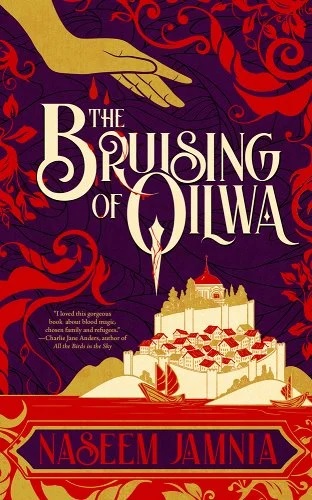 Book you're an evangelist for:
Book you're an evangelist for:
Have you heard the gospel of The Actual Star by Monica Byrne? I've gifted three or four copies of this book by now. It's a revelation. Three timelines, each set a thousand years after the next, with a tighter narrative than Cloud Atlas and a post-climate-collapse future that is hopeful and expansive societally, economically, socially and culturally. I'm amazed this book has not been on every awards list. It's truly a marvel on every level.
Book you've bought for the cover:
I bought the U.K. editions of the Blood Heir trilogy by Amélie Wen Zhao, because I am in love with those covers. This feels like a fake answer because Amélie is a friend of mine, so I would have bought copies of her books anyway, but I could not resist the Goldsboro sprayed-edge editions.
Book you hid from your parents:
I don't remember how old I was when I got Are You There God? It's Me, Margaret by Judy Blume from the library, but I do remember acutely knowing that I could not, under any circumstances, let my parents know the contents of this book. Unfortunately, my parents did find out and made me return it, so I never finished it. (Very fortunately, they have grown with me as people and parents and, I think, would handle this very differently now.)
Book that changed your life:
Though it had been recommended to me before this, I didn't pick up Jemisin's The Fifth Season until after I'd quit my Ph.D. program and moved to Reno. I was working on a project that I'd been picking at for a few years, but it wasn't coming together. The Fifth Season not only unlocked that project for me (this became my MFA thesis novel, which later inspired The Bruising of Qilwa, which is set in that same universe) but also showed me what speculative fiction--indeed, what all fiction--could be. I've always loved English class, because literary analysis makes books come alive in a whole new way for me; reading The Fifth Season showed me that books across genres can be master classes in literature, worthy of such analyses. I was stunned by Jemisin's point-of-view choices, braided narrative, time jumps, character designs, worldbuilding--every word in that book is utter perfection. It fundamentally changed how I approach writing.
Favorite line from a book:
"Indeed--why should I not admit it?--in that very moment, my heart was breaking." --Kazuo Ishiguro, The Remains of the Day
Five books you'll never part with:
Because I already waxed poetic about The Fifth Season and chose a quote from The Remains of the Day, I'm going to list five other books in the interest of ~diversity~ in my answers.
So You Want to Be a Robot by Merc Fenn Wolfmoor--an exquisite short fiction collection by one of the most revolutionary authors I've ever read.
She Who Became the Sun by Shelley Parker-Chan--holy cannoli on a ravioli, Batman, I hope one day I can write a historical speculative fiction of Iran like this.
The Complete Persepolis by Marjane Satrapi--the book I first saw myself in, at age 21.
Borderlands/La Frontera by Gloria Anzaldúa--a stunning examination of liminal spaces of identity.
Craft in the Real World by Matthew Salesses--a redefinition of craft and validation of the experience of being a marginalized person in writing workshops.
Book you most want to read again for the first time:
It took me a while to realize the answer here: The Traitor Baru Cormorant by Seth Dickinson. It's exquisite on the line level and in its larger scope; how does someone make accounting so tense? I'm in awe of every line: "This is the truth. You will know because it hurts." AND IT HURTS A LOT!
Book Candy
Book Candy
CrimeReads explained "why true crime readers make ideal romance novel protagonists."
Librarian Sharon McKellar "collects all the things left in books--from love letters to old photos," NPR reported.
"An introduction to Stanislaw Lem, the great Polish sci-fi writer, by Jonathan Lethem," courtesy of Open Culture.
Author Ayşegül Savaş picked her top 10 novels about neighbors for the Guardian.
Life on the Mississippi: An Epic American Adventure
by Rinker Buck
For Rinker Buck, conquering the 2,000 miles of river between Pittsburgh and New Orleans on a hand-built wooden flatboat was more than an attempt to sate his lifelong appetite for adventure; it was a journey into the past, a way of exploring an overlooked but crucial chapter of American history. In Life on the Mississippi, his illuminative and entertaining account of his days aboard his ramshackle rivercraft, Buck describes how his fascination with "a primitive technology, a simple wooden box called a flatboat" deepened and transformed his understanding of his country and its past.
This feat--retracing a fabled route that doubles as an opening into a forgotten or misunderstood aspect of American history--is hardly the author's first. As teenagers, Buck and his brother completed a daring coast-to-coast flight across the U.S., becoming the youngest pilots to do so. The story became the stuff of legend, immortalized in his Flight of Passage, a cult favorite among aviators. Decades later, accompanied by another brother and a team of mules, Buck drove a covered wagon 2,000 miles along one of the nation's most arduous routes, the basis for his PEN/New England Award-winning book The Oregon Trail.
It was while researching the Oregon Trail pioneers that the author was first struck by the importance of "the great flatboat era," the period preceding and overlapping the westward push across the plains. The flatboat pilots of the eastern riverways had forged a "plucky, hand-me-down ingenuity"; that the flatboat has not enjoyed the same iconographic status as the covered wagon is a mistake Life on the Mississippi aims to address.
The reasons for the craft's marginalization in history, Buck suggests, are twofold. First, the lofty outlook of many traditional historians, with their "composite of high theory and 'great man' narratives," does little to reflect the "hardscrabble, edgy lives of most 19th-century Americans," of which the flatboat was a product. Secondly, few traces of the flatboat era have survived in the physical culture of the United States, which points to both the vessel's versatility and the resourcefulness of its operators. In one of the book's many revelatory details, Buck notes that most flatboats, upon reaching their destination, were stripped and sold as salvage, helping build the young nation's (largely wooden) infrastructure and boosting the boatman's profits. "History," Buck remarks, "was literally destroying a record of itself every time a flatboat landed and was taken apart to build something else."
Enthralled by the "chaotic, democratic forces that had contributed to the flatboat era," Buck is not content to simply study this history from afar; he closes the gulf of time by building a boat of his own. Though the resultant vessel is certainly flawed--the craftsmanship of the historical reenactor-cum-boatbuilder he hires to help leaves something to be desired--its charm is undeniable, its imperfections evocative of the rough-hewn texture of frontier life. Buck christens the flatboat Patience, a name that reflects his own temperament and, he soon learns, a requisite virtue of any halfway decent riverboat pilot.
Life on the Mississippi succeeds, in one way among many, as an ode to cool heads; life aboard the Patience puts the author up against the crowded and potentially hazardous industrial spaces that are the modern American riverways, requiring him to navigate around massive commercial tugboats as well as reckless pleasure boat owners. Family, friends and skeptical strangers repeatedly warn Buck that his river adventure will be the death of him, but his easygoing confidence and calm rationality win out. In fact, moments of stress and adversity often deliver Buck to a state of paradoxical serenity, and make for some of the book's most arresting scenes; when he successfully frees the stranded Patience from a mudbank, he is "filled with the most glorious feelings of freedom and self-love."
Along the way, Buck takes care to pay tribute to his many forebears in the genre of riverboat travelogue and cites the wisdom of these texts so frequently that their authors feel like crewmates. Asbury C. Jaquess's 1834 narrative and others like it provide an aesthetic as well as practical template for the Patience expedition, stoking Buck's sense of romance and getting him out of a few tight spots along the way.
More than once during his riverine odyssey, Buck recalls a passage from Jaquess's journal where the adventurer remarks that time spent sailing is among the best ways one might "acquire a knowledge of human nature." The significance of this notion is clear in Life on the Mississippi. Perhaps the book's most poignant aspect is achieved thanks to the author's ability to sketch brief, affecting portraits of the people with whom his voyage brings him into contact. Notable among these is the "river rat" Ron Richardson, whose brief appearance in the book has an outsized resonance. The story of Richardson's family and its multiple generations who lived in close connection to the river allow Buck, in a few short pages, to gesture at a whole world with America's rivers at its center. Buck's ability to deftly balance the intimate and the epic, along with his pervading charm and literary panache, make Life on the Mississippi an entertaining and engrossing read. --Theo Henderson
An Interview With
_Dan_Corjulo.jpg) |
|
| (photo: Dan Corjulo) | |
Rinker Buck is the author of several bestselling and award-winning books, including The Oregon Trail, Flight of Passage and First Job. His journalism career has included tenures at the Berkshire Eagle and the Hartford Courant, and his writing has appeared in Vanity Fair and Time, among other publications. He has traveled the United States by motorcycle, airplane, covered wagon and, now, flatboat. In Life on the Mississippi: An Epic American Adventure (Avid Reader Press, August 9, 2022), Buck combines memoir and history, using his 2,000-mile voyage on the Ohio and Mississippi rivers to reexamine the American frontier.
Your book places a simple and unassuming technology, the wooden flatboat, and the river networks on which it traveled, at the center of the frontier experience in the nascent United States. Why has it taken so long for the flatboat to get its due?
The writing of history about America's formative years has tended to focus on the theoretical consequences of the founders' original sin: the legalization of slavery. Thus, most of the attention has been paid to moments like the Missouri Compromise, the Kansas-Nebraska Act and the Compromise of 1850. These congressional battles tended to focus on midwestern and western states on the plains--Missouri, Kansas, Nebraska--and thus the focus was always on the covered wagons crossing those spaces, and not the flatboats of an earlier era.
We haven't been very well served by the American historical establishment. History is not simply political battles in Washington or diplomatic quarrels conducted across the Atlantic. It is also the lives, inventions and economic ingenuity of the common man, which Ivy League scholars, who have dominated the field and set the tone for teaching in the schools, have no interest in.
The role of the Hollywood movie in creating popular culture was also a big factor. Movies aren't really movies. They are repetitive genres--the myth of the west, the myth of romantic love, the myth of Mafia dons as lovable rogues and murderers. For reasons that I can't explain, the covered wagon and the cowboy became a more enduring motif than a river migrant on a wooden boat. Perhaps it's because the man on the horse is more romantic, but surely the Hollywood western dominated popular thought about the frontier.
Throughout your book, you refer often to the memoirs and travelogues produced by the flatboat adventurers of the 19th century. What speaks to you about these narratives, and why was it important to incorporate them so prominently into your own story?
The best history that you can write is not summation, but the words and the textuality delivered by the people who actually lived it. Original source material makes the narrative. It's a lot of work. I had to scour through local history rooms and search the web sites of historical societies all around the country to deliver these tangible histories. But there is a vividness and tangibility to the (sometimes barely grammatical) accounts of the flatboaters themselves. Who wants to read a bland summation about the number of Bible salesmen out there on the rivers? Or a bland summation of the impact of thunderstorms on the river? But when I take you along on the 1819 trip along the Mississippi when the Flints bury their infant daughter after being ravaged by a thunderstorm, the reader is engaged in storytelling, compelling narrative, and not just stale history. I try to achieve that effect in all my books. It's about the storytelling and the quality of the prose.
This book is the product of conventional research as well as a more experiential, hands-on approach. Is one aspect of this hybrid method more essential in grasping your subject?
They are inextricable. I do all the research and play it back for the reader as artfully as I can, because that's what readers deserve to receive from a writer: hard, serious, detailed fact and analysis. But this is made more attractive by the writer's own adventures in the same historic space. My experiential, hands-on descriptions of my own journey provide the narrative structure for the telling of the history. Will the author make it? How does he get around the barges the next time? My editor calls this kind of book "participatory history." The author actually occupying the same space and experiencing the arduousness of the original journey adds the drama that makes the book a compelling narrative.
The riverscapes you encounter on your journey are a far cry from the idyllic, picturesque scenes one might expect; they're largely commercial spaces, profoundly transformed by two centuries of industry and waste. Yet you seem no less enchanted by them. Was the tension between a mythic American past and the realities of the rivers today something you wrestled with?
I didn't wrestle with this as a tension. I confronted it as a reality, a felicitous contradiction to write about. History is a continuum. Everything that is present today is a reprise of factors that existed years ago. So it's all one long chain of time. But why should we consider the industrial blight of today as somehow less inspiring than the exquisite state of nature a century or two ago? Of course you can take this to extremes and not fight for environmental protection and conservation. But there is beauty there in the Rust Belt, too. I describe this early in the book when I talk about the beauty of the flatboat Patience swaying on its lines that first night after we dropped her into the Monongahela River above Pittsburgh. There is a black, woodblock, Ashcan School beauty to the industrial grimness of the American Ruhr, especially at night. The next day, as we sailed the Monongahela, I write about the "American rhapsody" of rail yards clanging, the din of highway traffic and iron foundries echoing with drop-hammer bangs that is beautiful and even exotic to the ear.
What about traveling by river changes how you see the country--its landscapes or its history?
There is something about being on the river that leads you to a sense of wonder about the countryside you're passing. The mountains hide the Rust Belt. So much of American development was along the rivers, the Ohio especially--this is less true of the Mississippi, but in some sections it's true. The Ohio, for almost 700 of the 1,000 miles it runs, is separated on both sides by the Appalachians. Initially, industry was located along the riverbanks to take advantage of water power. The interstate is beyond the Appalachian peaks. The interstate highway system, ironically, robbed us of the river views. We've been separated from the rivers. And for that reason, I don't think the American public really appreciates what happened during deindustrialization--because they can't see it.
Do you hope that readers of this book will build their own flatboats and float down the nearest river? And if not that, what do you hope the book inspires in its readers?
No. I don't hope for this, and I don't expect it either. Writers take these experiences for you so that you can sit in the relative safety of your living room or porch and experience it all without having to take to risk yourself. I spend huge amounts (bankruptcy amounts) making these trips so I can contribute to readers' understanding of history and adventure. It's tough but I have been doing it for years and I am inured to the hazards. Don't try this at home, friends. --Theo Henderson
Rediscover
Rediscover: The Satanic Verses
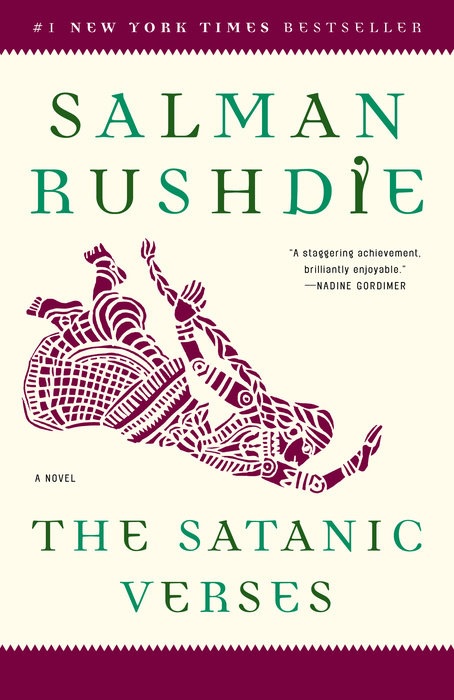 Salman Rushdie is, thankfully, on the road to recovery after the shocking attack last week that left him hospitalized with wounds to his face, neck and abdomen. The stabbing is a grisly result of the fatwa declared by Ayatollah Khomeini in 1989 over Rushdie's novel The Satanic Verses, which was perceived as irreverent in its depiction of the Islamic prophet Muhammad. Rushdie lived under strict security measures for many years, many of which had been relaxed prior to the attack.
Salman Rushdie is, thankfully, on the road to recovery after the shocking attack last week that left him hospitalized with wounds to his face, neck and abdomen. The stabbing is a grisly result of the fatwa declared by Ayatollah Khomeini in 1989 over Rushdie's novel The Satanic Verses, which was perceived as irreverent in its depiction of the Islamic prophet Muhammad. Rushdie lived under strict security measures for many years, many of which had been relaxed prior to the attack.
Henry Reese, who was moderating the event and was injured when he went to Rushdie's aid, is co-founder of City of Asylum in Pittsburgh, Pa., which promotes free expression, provides sanctuary for writers and artists under threat of persecution, and has a bookstore. He suggested to CNN that people react to the attack by buying a book by Rushdie and reading it; writers should "write to the full extent of truthfulness and their ability"; and all should recognize that creative expression "brings people to discuss important issues and to think about people other than themselves." Sales of Rushdie's books have surged since the attack.
The Satanic Verses follows two Indian expatriates on a hijacked flight from India to Britain that explodes over the English Channel. Both are miraculously saved; one takes on the personality of the archangel Gabriel, the other a devil. Their resulting experiences in England frame a series of dream sequences, including one based on the life of Muhammad. The novel's title refers to several Quranic verses about the pre-Islamic pagan gods of Mecca that Muhammad later renounced as errors induced by the Devil. Rushdie is the author of 11 other novels, including Midnight's Children (1981), which won the Booker Prize. The Satanic Verses is available from Random House Trade Paperbacks ($19).
| Advertisement Meet belle bear! |


